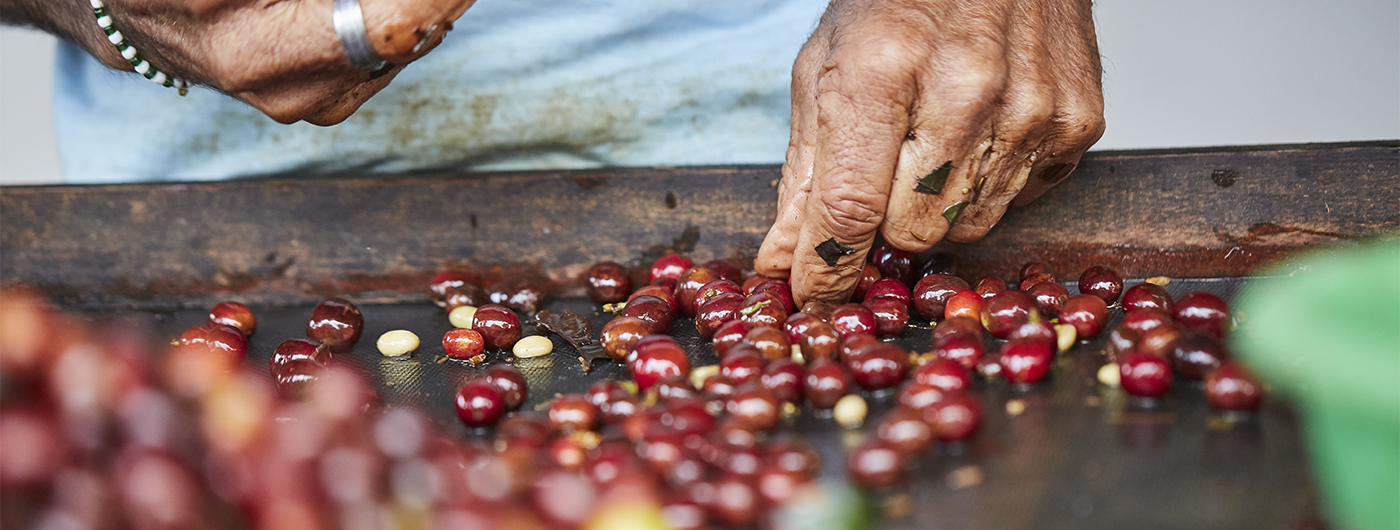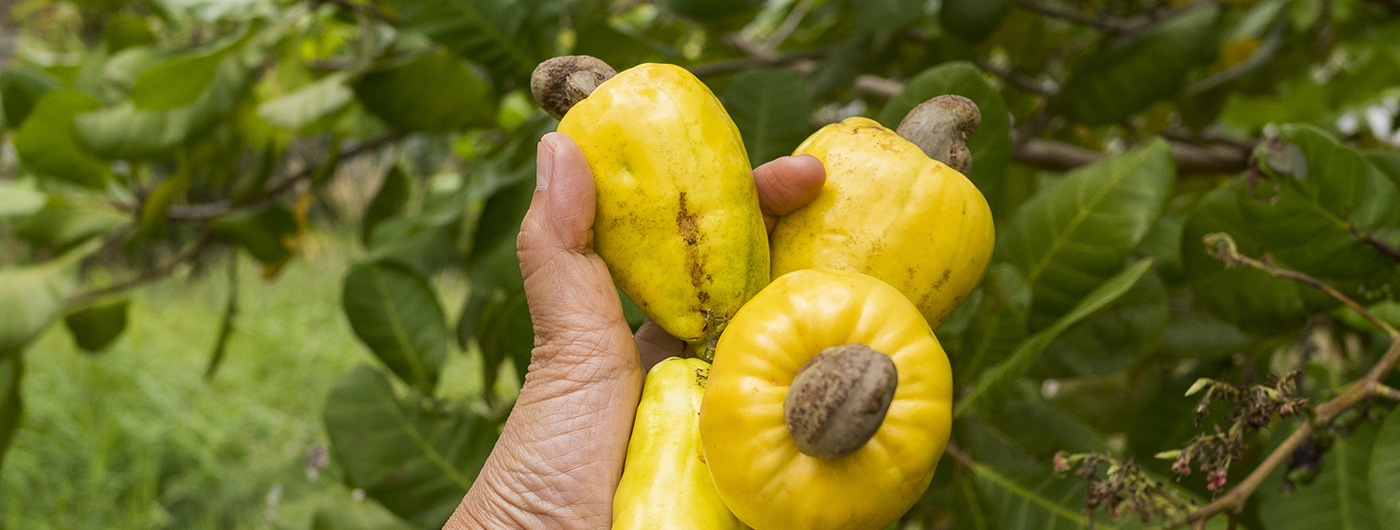

Comprehensive Coffee and Cashew Market Analysis – September 2025
This comprehensive analysis examines the strategic positioning of Vietnam’s coffee and cashew nut industries during September 2025, revealing significant market dynamics, pricing trends, and export performance. Vietnam continues to dominate as the world’s second-largest coffee producer and the leading cashew exporter, with both sectors experiencing remarkable growth trajectories despite global supply chain challenges.
Key Findings:
-
• Vietnam’s coffee production forecast reaches 31 million bags for the 2025/26 market year
• Robusta futures hit $4,737 per tonne in September 2025, reflecting supply constraints
• Cashew exports from January-July 2025 reached $3.249 billion, up 47% year-over-year
• China emerges as Vietnam’s largest cashew importer for the first time, overtaking the United States
• September 2025 presents tactical opportunities amid price volatility and harvest timing
Part I: Vietnam Coffee Market Analysis
1.1 Production Performance and Forecast
Vietnam’s coffee sector demonstrates robust recovery and expansion during the 2025/26 marketing year. Production is forecast to reach 31 million 60-kilogram bags, representing a significant increase from 29 million bags in the previous year. This growth reinforces Vietnam’s position as a critical player in global coffee supply chains.
The production breakdown reveals Vietnam’s strategic focus:
-
• Robusta Dominance: Robusta accounts for 30 million bags of the total forecast, maintaining Vietnam’s position as the world’s premier Robusta producer
• Arabica Production: Approximately 1 million bags, indicating continued diversification efforts
• Yield Excellence: Vietnam maintains coffee yields over three times higher than the global average, demonstrating advanced agricultural practices
1.2 Price Dynamics and Market Volatility
September 2025 witnessed significant price movements across both major coffee exchanges, reflecting complex supply-demand dynamics:
Robusta Market Performance: On the London exchange, Robusta futures for September 2025 increased by 0.94 percent, adding $44 to trade at $4,737 per tonne. This upward pressure stems from:
-
• Supply shortages from key exporting countries
• Climate-related production challenges in Brazil
• Strong global demand maintaining market tension
• Inventory constraints across major consuming markets
Arabica Market Trends: Arabica futures on the New York exchange declined by 0.24 percent to approximately $8.82 per kilogram, indicating:
-
• Different supply dynamics compared to Robusta
• Adequate supply from Central and South American origins
• Market differentiation based on coffee variety
Historical Context: Coffee prices in October 2025 reached 374.22 USd/Lbs, demonstrating continued strength with prices still 43.21% higher than year-ago levels, despite a 10.40% decline over the previous month.
1.3 Export Performance and Trade Flows
Vietnam’s coffee export sector continues to generate substantial foreign exchange earnings:
-
• Annual export value historically around $3 billion
• Strong demand from traditional markets in Europe and North America
• Emerging markets in Asia showing increased consumption
• Competitive positioning based on Robusta quality and consistency
1.4 Market Size and Growth Projections
Vietnam’s domestic coffee market demonstrates impressive expansion:
-
• Market size estimated at $552.58 million in 2025, expected to reach $816.81 million by 2030, growing at 8.13% CAGR
• The overall coffee market projected to grow by 4.33% (2025-2029), reaching $2.05 billion in market volume by 2029
• Well-established coffee culture driving domestic consumption
• Rising middle class fueling premium coffee segment growth
Global Market Context: The global coffee market is projected to grow by 2.96% (2025-2029), resulting in $108.40 billion in market volume by 2029, with 2025 revenue at home reaching $96.45 billion and out-of-home revenue at $376.70 billion.
1.5 Industry Challenges and Strategic Responses
Vietnam’s coffee sector faces multiple headwinds requiring adaptive strategies:
Environmental Pressures:
-
• Climate change impacts on growing regions
• Soil quality degradation from intensive farming
• Water resource management challenges
• Temperature and rainfall pattern shifts
Market Requirements:
-
• Increasing buyer demands for traceability systems
• Enhanced food safety standards
• Quality improvement expectations
• Sustainability certification requirements
Competitive Dynamics:
-
• Competition from other Robusta producers
• Price volatility affecting farmer income
• Processing technology upgrades needed
• Value chain optimization opportunities
Part II: Vietnam Cashew Nut Market Analysis
2.1 Global Leadership Position
Vietnam is the world’s leading producer and exporter of cashew nuts, contributing over 50 percent of the global supply. This dominant position translates into:
-
• Billions of dollars in annual export revenue
• Employment for hundreds of thousands of workers
• Critical income source for agricultural provinces
• Strategic importance in national export strategy
Production Capacity: In 2025, Vietnam maintained stable cashew output, producing around 1.5 million tons of raw cashew nuts, supported by:
-
• Modern processing factories with advanced technology
• Stringent quality control systems
• Efficient supply chain infrastructure
• Skilled workforce in processing operations
Geographic Concentration: Primary production concentrated in provinces including:
-
• Binh Phuoc (leading producer)
• Dong Nai
• Ba Ria-Vung Tau
• Other southern provinces
2.2 Export Performance – Historic Achievement
The first seven months of 2025 represent a watershed period for Vietnam’s cashew industry:
Record Export Growth: From January to July 2025, cumulative export value reached $3.249 billion, representing a 47% increase over the same period last year. This exceptional performance reflects:
-
• Strong global demand recovery
• Improved market access
• Quality enhancements
• Competitive pricing strategies
2025 Annual Targets: Vietnam targets $4.5 billion in cashew exports for 2025, with strong momentum suggesting this goal is achievable. Recent trends indicate the target is within reach based on:
-
• Sustained demand from key markets
• Favorable pricing conditions
• Consistent production quality
• Effective market diversification
2.3 Market Shift – China’s Emergence
September 2025 marks a historic shift in Vietnam’s cashew export landscape:
China Overtakes United States: Vietnam exported approximately 96,000 tons of cashew nuts to China during this period, generating over $608 million in revenue — a nearly 50% increase in value compared to the same timeframe last year, pushing China’s market share to 22.4% of Vietnam’s total cashew exports.
This transformation reflects:
-
• China’s growing middle class and changing consumption patterns
• Increased awareness of cashew health benefits
• Strong bilateral trade relations
• Strategic market development by Vietnamese exporters
Market Distribution Analysis: Leading destinations show United States accounting for approximately 14% and Singapore for approximately 10% of exports, indicating:
-
• Successful market diversification
• Reduced dependency on single markets
• Geographic spread of risk
• Multiple revenue streams
Traditional Market Performance: Vietnamese cashew nuts are present in over 90 countries and territories worldwide, with exports to the US reaching over 179,000 tons valued at $1.07 billion, demonstrating continued strength in established markets.
2.4 September 2025 Strategic Window
Raw Cashew Nut Pricing Dynamics: September 2025 presents a tactical window for Vietnamese cashew exporters with attractive prices, though buyers must navigate risks related to quality, currency, and upcoming harvest volumes.
Strategic Considerations for September:
-
1. Price Attractiveness: Current pricing offers favorable margins
2. Quality Risks: Variations in incoming raw material quality
3. Currency Fluctuations: Exchange rate impacts on profitability
4. Harvest Timing: Upcoming harvest volumes affecting supply
5. Inventory Management: Balancing current purchases with future availability
Recommended Approach: A phased buying strategy combining:
-
• Early action to secure competitively priced inventory
• Close market monitoring for price movements
• Diversified supplier relationships
• Risk hedging through staged purchases
• Quality assurance protocols throughout procurement
2.5 Market Size and Future Projections
Vietnam Market Valuation: The Vietnam cashew market size is expected to reach $5.08 billion in 2025 and grow at 5.80% CAGR to reach $6.73 billion by 2030, driven by:
-
• Processing value addition
• Export market expansion
• Domestic consumption growth
• Premium product development
Global Market Context: The global cashew market size is expected to reach from $8.14 billion in 2025 to $11.67 billion by 2033, growing at 4.6% CAGR, indicating:
-
• Sustained global demand growth
• Health-conscious consumer trends
• Snacking market expansion
• Plant-based protein demand
Price Outlook: With raw cashew prices increasing at origin, kernel prices could potentially exceed $4.50 per pound, though ultimate market conditions will depend on global demand patterns, processing capacities, and supply chain navigation effectiveness.
Part III: Comparative Analysis and Strategic Insights
3.1 Sectoral Performance Comparison
| Metric | Coffee Sector | Cashew Sector |
| Global Rank | #2 Producer | #1 Exporter |
| 2025 Production | 31M bags forecast | 1.5M tons raw nuts |
| Export Growth (Jan-Jul) | Stable, $3B annually | +47% YoY, $3.249B |
| Key Challenge | Climate & Quality | Raw Material Pricing |
| Market Position | Robusta Dominance | Global Supply Leader |
| Price Trend (Sept) | +0.94% (Robusta) | Tactical Window |
3.2 Synergies and Complementarities
Both sectors demonstrate strategic advantages:
Shared Strengths:
-
• Geographic concentration enabling infrastructure sharing
• Export-oriented business models
• Strong government support
• Established international reputation
• Advanced processing capabilities
Complementary Seasonal Patterns:
-
• Different harvest cycles providing year-round economic activity
• Risk diversification for agricultural communities
• Equipment and facility utilization optimization
• Workforce skill transferability
3.3 Infrastructure and Processing Excellence
Both industries benefit from:
-
• Modern processing facilities with international standards
• Port access through southern Vietnam
• Established logistics networks
• Quality control systems
• Research and development capabilities
3.4 Market Diversification Strategies
Coffee Sector Approach:
-
• Maintaining dominance in Robusta segment
• Gradual Arabica development for premium markets
• Specialty coffee emergence
• Direct trade relationships
• Sustainability certifications
Cashew Sector Approach:
-
• Geographic market diversification (90+ countries)
• China market penetration success
• Value-added product development
• Quality grade optimization
• Organic and specialty segment growth
Part IV: Risk Assessment and Mitigation
4.1 Coffee Sector Risks
Climate Vulnerability:
-
• Extreme weather events impact
• Long-term temperature changes
• Rainfall pattern alterations
• Pest and disease pressure increase
Market Risks:
-
• Price volatility affecting farmer profitability
• Competition from emerging Robusta producers
• Quality consistency requirements
• Sustainability compliance costs
Mitigation Strategies:
-
• Climate-resilient varietals development
• Irrigation infrastructure investment
• Diversified farming practices
• Premium quality positioning
• Farmer training and support programs
4.2 Cashew Sector Risks
Supply Chain Vulnerabilities:
-
• Raw material price fluctuations
• Quality variations in imported nuts
• Processing capacity constraints
• Currency exchange rate impacts
Market Concentration:
-
• Dependency on limited markets (now diversifying)
• Competition from African producers
• Labor cost increases
• Food safety compliance requirements
Mitigation Strategies:
-
• Market diversification (successfully underway)
• Vertical integration opportunities
• Automation and efficiency improvements
• Quality premium positioning
• Origin diversification for raw materials
4.3 Macroeconomic Considerations
Global Economic Factors:
-
• Consumer demand sensitivity to economic cycles
• Trade policy changes and tariffs
• Exchange rate fluctuations
• Supply chain disruption potential
Vietnam-Specific Factors:
-
• Labor availability and costs
• Infrastructure development needs
• Environmental regulations
• International trade agreements
Part V: Strategic Recommendations
5.1 For Coffee Stakeholders
Short-Term Actions (Q4 2025):
-
1. Capitalize on current Robusta price strength
2. Secure favorable export contracts before harvest
3. Implement quality control enhancements
4. Monitor climate patterns affecting next crop
5. Optimize inventory management given price volatility
Medium-Term Strategies (2026-2027):
-
1. Invest in sustainable farming certifications
2. Develop specialty coffee segments
3. Enhance traceability systems
4. Explore direct trade models
5. Implement climate adaptation measures
Long-Term Vision (2028-2030):
-
1. Position Vietnam as premium Robusta leader
2. Expand Arabica production in suitable regions
3. Develop processing and roasting capabilities
4. Create branded consumer products
5. Lead sustainability standards in Asia
5.2 For Cashew Stakeholders
Short-Term Actions (Q4 2025):
-
1. Execute phased procurement strategy for September window
2. Strengthen China market relationships
3. Optimize processing efficiency for peak season
4. Secure working capital for inventory buildup
5. Monitor raw material quality closely
Medium-Term Strategies (2026-2027):
-
1. Diversify raw material sources strategically
2. Develop value-added product lines
3. Expand market presence in emerging economies
4. Invest in automation and technology
5. Build brand recognition in key markets
Long-Term Vision (2028-2030):
-
1. Maintain 50%+ global market share
2. Lead industry in sustainability practices
3. Develop premium and organic segments
4. Create integrated supply chain model
5. Establish Vietnam as cashew innovation hub
5.3 Policy Recommendations
For Government Agencies:
-
1. Maintain export facilitation support
2. Invest in agricultural research
3. Develop climate adaptation programs
4. Negotiate favorable trade agreements
5. Support quality infrastructure development
For Industry Associations:
-
1. Coordinate market intelligence sharing
2. Develop industry standards
3. Facilitate technology transfer
4. Organize trade missions
5. Promote Vietnam origin globally
Part VI: Outlook and Conclusions
6.1 Near-Term Outlook (Q4 2025 – Q1 2026)
Coffee Sector:
-
• Expect continued price strength in Robusta
• 2025/26 harvest likely to meet 31M bag forecast
• Export demand remains robust
• Quality premiums may increase
• Climate monitoring critical for next season planning
Cashew Sector:
-
• September procurement window creating opportunities
• Q4 typically strong season for exports
• China demand likely to remain elevated
• $4.5B annual target achievable
• Processing capacity utilization high
6.2 Medium-Term Projections (2026-2028)
Coffee Industry:
-
• Steady production growth to continue
• Sustainability becoming market requirement
• Specialty segment expansion accelerating
• Price volatility persisting but manageable
• Domestic consumption growing significantly
Cashew Industry:
-
• Market diversification reducing risk
• Processing technology advances improving efficiency
• Value-added products gaining market share
• Competition intensifying requiring differentiation
• Sustainable sourcing becoming competitive advantage
6.3 Long-Term Vision (2029-2030)
Combined Agricultural Excellence: Both sectors positioned to:
-
• Maintain global leadership positions
• Command premium pricing through quality
• Lead sustainability practices
• Create significant economic value
• Support rural development effectively
6.4 Final Conclusions
September 2025 represents a pivotal moment for both Vietnam’s coffee and cashew industries:
Coffee Sector Strengths:
-
• Production forecast of 31M bags demonstrates capacity growth
• Price dynamics favor Vietnamese Robusta producers
• Market infrastructure well-developed
• Sustainability transition underway
• Domestic market providing additional growth avenue
Cashew Sector Achievements:
-
• 47% export growth (Jan-Jul) exceeds expectations
• China market breakthrough reduces concentration risk
• Processing excellence maintains competitive edge
• $4.5B target within reach
• September pricing window offering tactical opportunities
Strategic Imperatives:
-
1. Quality Focus: Both sectors must prioritize quality to command premiums
2. Sustainability Leadership: Environmental and social responsibility becoming non-negotiable
3. Market Diversification: Geographic spread reduces vulnerability
4. Value Addition: Moving up value chain increases profitability
5. Innovation: Technology and practice improvements essential for competitiveness
Risk Management:
-
• Climate adaptation critical for coffee
• Supply chain resilience essential for cashews
• Market intelligence capabilities need enhancement
• Financial risk management tools utilization
• Quality assurance systems continuous improvement
Opportunity Capture:
-
• Current market conditions favorable for both sectors
• Global demand trends supporting growth
• Vietnam’s competitive advantages sustainable
• Infrastructure and capability improvements ongoing
• Government support facilitating development
6.5 Final Statement
Vietnam’s coffee and cashew industries demonstrate remarkable resilience and growth potential in September 2025. The coffee sector’s production expansion to 31 million bags and Robusta price strength, combined with the cashew sector’s extraordinary 47% export growth and successful China market penetration, position Vietnam as an agricultural powerhouse.
The tactical opportunities present in September 2025—from favorable coffee pricing to the strategic cashew procurement window—require sophisticated navigation. Stakeholders who effectively balance short-term opportunity capture with long-term strategic positioning will reap substantial rewards.
As both industries face challenges from climate change, market volatility, and evolving quality requirements, Vietnam’s proven adaptability and continuous improvement culture provide confidence in sustained success. The complementary nature of these sectors, combined with strategic government support and private sector dynamism, creates a powerful foundation for continued growth through 2030 and beyond.
KAI Farm remains committed to providing ongoing market intelligence and analysis to support stakeholder decision-making in these dynamic and critical agricultural sectors.
Appendices
Appendix A: Key Data Points Summary
Coffee:
-
• Production 2025/26: 31M bags (30M Robusta, 1M Arabica)
• Robusta Price (Sept): $4,737/tonne (+0.94%)
• Arabica Price (Sept): $8.82/kg (-0.24%)
• Market Size 2025: $552.58M (domestic)
• Market Growth CAGR: 8.13% (2025-2030)
• Global Market 2029: $108.40B
Cashews:
-
• Production 2025: 1.5M tons (raw nuts)
• Exports Jan-Jul 2025: $3.249B (+47% YoY)
• 2025 Target: $4.5B
• China Exports: 96,000 tons, $608M (+50% value)
• Market Size 2025: $5.08B
• Market Growth CAGR: 5.80% (2025-2030)
• Global Market 2033: $11.67B
Appendix B: Market Share Distribution
Cashew Export Destinations (2025):
-
• China: 22.4%
• United States: ~14%
• Singapore: ~10%
• Others: 90+ countries
Appendix C: Critical Success Factors
For Coffee:
-
1. Climate adaptation capability
2. Quality consistency
3. Sustainability certification
4. Market diversification
5. Processing efficiency
For Cashews:
-
1. Raw material procurement timing
2. Processing technology
3. Market diversification success
4. Quality grade optimization
5. Supply chain resilience

